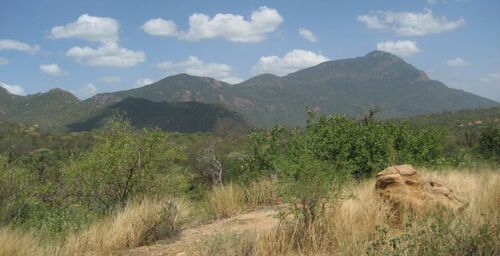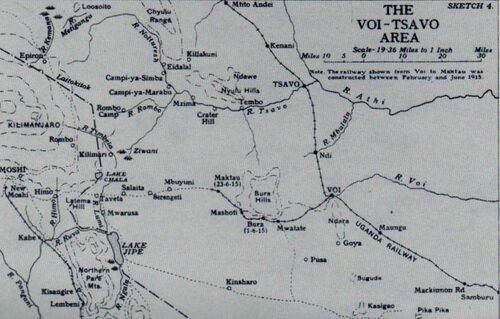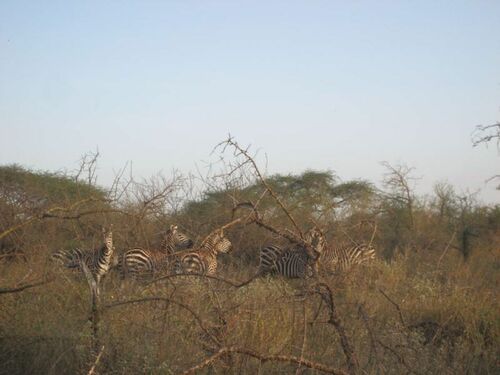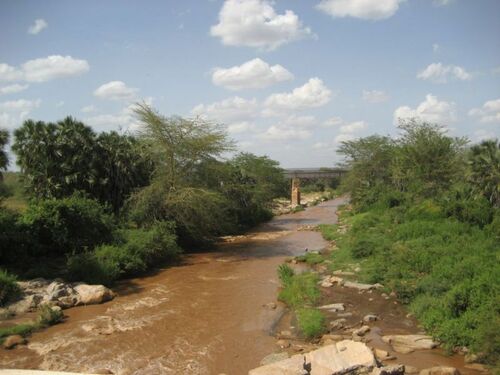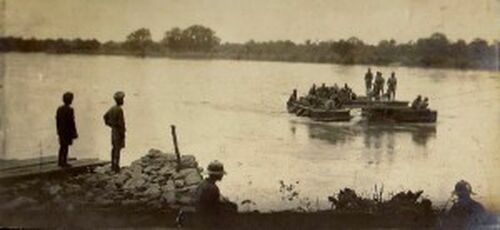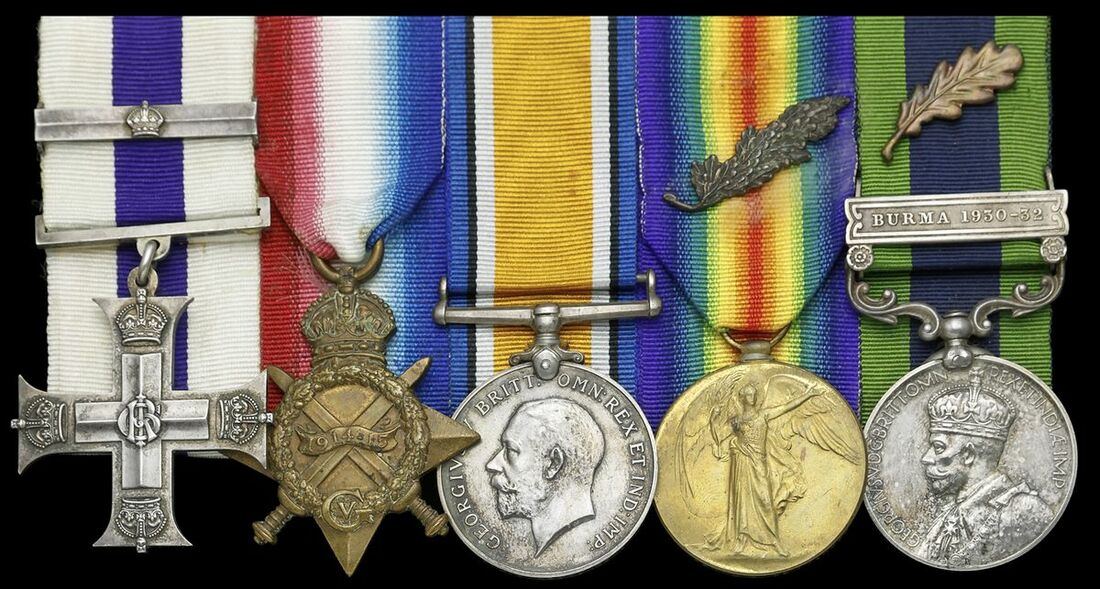Auction: 23002 - Orders, Decorations and Medals
Lot: 110
'Thank you Sir, but you might have made it a DSO this time.'
The curt - if perhaps merited reply - to Lieutenant-Colonel Ward after learning that he would add a Bar to his M.C.
An outstanding Great War East Africa operations ‘Tsavo Valley September 1914' M.C. and 'Rufiji River 1917' Second Award Bar group of five awarded to Lieutenant-Colonel J. A. Pottinger, Indian Army, who was latterly 'mentioned' for the Burma 1930-32 operations
Military Cross, G.V.R., with Second Award Bar, unnamed as issued; 1914-15 Star (Captain J. A. Pottinger, 1/30/Punjabis); British War and Victory Medals, with M.I.D. oak leaves (Capt. J. A. Pettinger); India General Service 1908-35, 1 clasp, Burma 1930-32, with M.I.D. oak leaf (Lt. Col. J. A. Pottinger, 3-16 Punjab R.), note surname spelling, this last with scratch to obverse, very fine (5)
Ex-Bruce Cazel Collection, DNW, November 2009.
M.C. London Gazette 14 January 1916.
Second Award Bar to M.C. London Gazette 17 April 1917:
‘For conspicuous gallantry and devotion to duty. By his skilful dispositions he concealed the presence of his company from the enemy. Later, he took a prominent part in the fighting, and handled his company with marked courage and efficiency under the most difficult circumstances.’
M.I.D. London Gazette 1 February 1917 (East Africa) & 20 December 1932 (Burma).
John Ashton Pottinger was born at Ahmednagar, India on 28 July 1884 and was educated at Cheltenham College, Gloucestershire, 1898-1902, and at the Royal Military College, Sandhurst, thence being commissioned 2nd Lieutenant in the 1st Battalion, Liverpool Regiment on 10 October 1903. Entering the Indian Army, he was promoted to Lieutenant in the 35th Sikhs in July 1907 and was posted to the 30th Punjabis in November 1907. In October 1912 he was promoted to Captain. During the Great War years he served with the 30th Punjabis, but began having been attached to the 29th Punjabis. Their story is perhaps best told by The Soldier's Burden website:
'The 29th Punjabis, located in Hyderabad, Sind, was initially warned to prepare for the European theatre but that order was altered to read East Africa. The 29th was a Class Company Regiment containing 4 companies of Sikhs, 2 companies of Dogras and 2 companies of Punjabi Mussalmans. The battalion was brought up to war strength by a draft of 250 men from the 30th Punjabis which had an identical class composition; 3 British and 3 Indian officers and 4 buglers accompanied this draft from the 30th Punjabis. The battalion entrained on 16th August and after a 7 hour overnight journey reached Karachi the following morning to embark on SS Nairung. Reaching Mombasa on 1st September the Punjabis were split in two, battalion headquarters and two double companies with the two battalion machine guns entrained for Nairobi with HQ IEF ‘C’ whilst the other two double companies went up the Uganda Railway line only as far as Voi, less than a third of the distance to Nairobi (6). West of Voi the Tsavo River valley ran up to the border with GEA: the valley was covered in a dense bush of thorn-trees and the only routes in it were game trails made by animals. Nevertheless the valley was an attractive route eastwards for German raiding parties because of the abundant water supply in the river bed. By now KAR companies and BEA Volunteer units were already intercepting German intrusions from across the border.
The Voi party, 8 Indian officers and 351 sepoys of Numbers II and III Double Companies, 8 Regimental Scouts under Havildar Wazir Singh and the section of the Field Ambulance, was commanded by Major A.A. James. The British officers with him were Captain H.T. Skinner, Captain J.A. Pottinger (30th Punjabis attached) and Lieutenant C.E.U. Bremner. Each man carried 400 rounds of ammunition; 14 days rations were sent to Voi after being unloaded, but all the battalion horses went to Nairobi to avoid the diseases prevalent in the Voi area. The only information given to Major James was that small isolated enemy parties were attempting to attack the railway line. James detrained at Voi during the hours of darkness and set up camp nearby. He learned that an armoured train was being constructed in the Nairobi railway workshops and it would soon appear to help defend this stretch of the railway, and that a strong blockhouse was being built to guard the vital Tsavo River rail bridge, 50 kilometres north-west of Voi. Meanwhile the remainder of the Punjabis detrained at Nairobi where Colonel Stewart was promoted to Brigadier General and placed in charge of all troops in BEA and Uganda. The British officers with Colonel Drew were Major G.W. Haslehurst, Captains H.A. Murray and Captain W.K.P. Wilson (both 30th Punjabis attached), Captain C.R. Cleaver, Lieutenants G.N. Bignell and H.R. Stranack, 2nd Lieutenant E.K. Bird and the Medical Officer Captain J.V. MacDonald, Indian Medical Service (IMS). Nine Indian officers, 1 Sub-Assistant-Surgeon, IMS, and 384 sepoys comprised Numbers I and IV Double Companies at Nairobi. The KAR had laid out a camp in preparation for the Punjabis’ arrival.
The German commander at Moshi, just west of the GEA-BEA border south of Mount Kilimanjaro, had sent out a small detachment under Lieutenant von Oppen on 27th August with orders to “destroy or interrupt the railway and telegraph line at Tsavo”. Two days later in the area between Mzima and the Rombo River von Oppen successfully ambushed a British mounted infantry party of Abyssinians and Somalis that was accompanied by local Masai tribal auxiliaries. Von Oppen had not taken casualties but he realized the vulnerability of his small party and so he halted and asked headquarters at Moshi for a machine gun and reinforcements. Captain Hans Schulz and his 13 Field Company – over 200 Askari with 4 machine guns – came and took over the von Oppen mission on 1st September. Schulz moved cautiously forward through very dense and difficult bush down the Tsavo Valley.
On 3rd September a small 1st (Nyasaland) KAR observation post at Mzima Springs was engaged by Schulz’s men and the KAR Askari under Lieutenant R.C. Hardingham withdrew eastwards. On getting this news the following day Major James, now commanding all troops in the Voi area, moved the bulk of his troops to Tsavo and ordered detachments outside the valley to move closer in an attempt to trap the enemy party. It has to be said that at this stage of the campaign the Punjabis had no concept of local tactical conditions and considerations, particularly the time needed for messages to be passed by runner through thick bush, but Indian Army officers took control of operations because of their seniority: this often dismayed the KAR officers and Askari who understood the reality and savagery of close-contact bush warfare.
On 5th September James ordered Captain Skinner to advance up the valley with two companies; Skinner met Hardingham withdrawing and it became Skinner’s opinion by nightfall that the Germans were now east of him, having slipped past in the thick bush. On hearing this James ordered Skinner to turn around on 6th September and attack the Germans from a flank. In fact Schulz was still west of Skinner and trailing him. As Skinner’s sepoys left a low ridge the Germans occupied it and took the Punjabi rearguard by surprise with rifle fire. A brief firefight started and a group of 4th (Uganda) KAR under Lieutenant G.C.O. Oldfield joined in. German machine guns came into action and Oldfield was soon killed whilst eight of his Askari were wounded. It is quite probable that these 4th KAR Askari held the line whilst the Punjabis regrouped.
Naik Gul Mohamed brought up reinforcements to support the rearguard, and he, Subadar Sher Baz, Captain Pottinger and a few sepoys charged an enemy machine gun. Gul Mohammed was twice wounded and Sher Baz attempted to recover him, but Sher Baz was himself severely wounded whilst in this act and he died soon afterwards. When trying to deploy in the thick bush many sepoys became totally disorientated and lost. Pottinger, assisted and doubtless guided by a 1st KAR party under Lieutenant C.G. Phillips, enfiladed the German right flank, forcing Schulz to abandon the ridge; the German commander then withdrew having completed one of his tasks. A British follow-up was considered to be impractical at that moment, especially as the Punjabi machine guns were elsewhere.
So it was that Subadar Sher Baz (posthumous) and Naik Gul Muhammad (No. 4050) earned the first two Indian Orders of Merit of the Great War, with Pottinger being duly rewarded with his first Military Cross. He would serve in East Africa from 1 September 1914-May 1915 and December 1916-March 1917. During 1918 he served in Mesopotamia and with the North Persia Force, also being attached to the 36th Sikhs. Pottinger was appointed Acting Major in December 1917 and was promoted to that rank in October 1918. His Second Award Bar to his M.C. was earned in the crossing at the Rufiji River at Kibambawe on 6 January 1917. The Western Front Association offer a fine report on the events:
'Captain Ernst Otto commanded the German troops facing the advance of the two easternmost British columns, and his troops were the Nos 1, 3, 9, 23 and 24 Field Companies. Von Chappuis' detachment had re-joined Otto's command before the Beho-Beho action. After he had disengaged at Beho-Beho, Otto marched his men south past Lake Tagalala to Kibambawe, where he crossed the Rufiji on the night of 4 January 1917. Otto's troops then dismantled the roadway on the bridge that crossed the river at that point, leaving only the wooden piers that were driven into the river bed. So far the German casualties had been 1 European and 11 Askari killed, 1 European and 12 Askari wounded and 6 Europeans and 21 Askari missing.
When reports arrived of the successful crossing of the Rufiji by the westernmost British column, Otto sent No 9 Field Company and Wangoni Company to Mkindu and No 1 Field Company to Mkalinzo. The remaining companies defended the Kibambawe crossing. Otto did try to telegraph Colonel Paul von Lettow Vorbeck's Schutztruppe headquarters to ascertain whether he should fight on the Rufiji or withdraw further south to Utunge, but the German headquarters was on the move and communications failed. Otto stayed on the Rufiji.
On 5 January, 1st East African Brigade followed up Otto's withdrawal with the 130th Baluchis leading. On reaching the north bank of the Rufiji, a prominent hill above the river was found entrenched but unoccupied by the enemy. The brigade occupied the feature, naming it Observation Hill because of the wide view that could be obtained from its slopes. The width of the river below Observation Hill varied from 350 to 650 metres and the depth made it unfordable. Hippopotami and crocodiles in the water compounded the British difficulties. A ridge line south of the bridge site gave the German machine gunners a good field of fire onto any British attempts to repair the bridge or to cross the river at that point.
But further west the German-occupied ridge was more distant from the river and a suitable point was found for a crossing at a distance of around two kilometers from the bridge. Here the river was only 350 metres wide. General Smuts' headquarters had ordered that a crossing was to take place as soon as possible. Two Royal Navy ships' lifeboats had been carried and hauled through the bush by relays of exhausted porters, but when the lifeboats arrived at the Rufiji it was found that the oars had not been packed in the boats. This left seven small Berthon boats available, each capable of carrying only three men including the crewman. These boats had been designed by a British clergyman in India, the Reverend E L Berthon, and they had been introduced into the Indian Army for operations on the North West Frontier.
The 30th Punjabis were ordered to cross the river and a reconnaissance party of two officers and four sepoys under Captain J A Pottinger MC was rowed across; bayonets had to be used to dissuade hippos from getting too close to the frail boats. When he had selected a suitable concealed defensive position, Pottinger ordered the remainder of his ‘B' Company (Punjabi Musulmans) to cross. By dawn the company with two machine guns was over the river and concealed in thick beds of reeds. Throughout 6 January the Germans were unaware of the small British bridgehead on the southern bank. During this day the sepoys lay still, suffering from pangs of thirst and hunger. That night the remainder of the Punjabis and one company of the Baluchis crossed into the bridgehead and entrenched there under the command of the Punjabis' commanding officer, Lieutenant Colonel Arthur Ward.
After first light on 7 January Otto's men observed the British position on the south bank and opened fire on it. Captain W K B Wilson, commanding ‘D' Company (Sikhs) of the Punjabis, was ordered to advance eastwards parallel to the river. This advance was stopped by a German counter attack. ‘C' Company (Dogras) of the Punjabis under Second Lieutenant C P Clarke advanced southeast to secure ‘D' Company's right flank. Pottinger was then ordered to advance with ‘B' Company and attack the enemy in order to relieve the pressure on ‘D' Company. Ward then sent his ‘A' Company (Sikhs) under Major A H G Thomson to hold the line to the right of ‘D' Company. The 30th Punjabis was now totally committed into the firing line where two separate heavy actions were being fought, with ‘D' and ‘A' Companies on the left and ‘B' and ‘C' Companies on the right. Ward had used up his reserves and his only remaining sub-unit, the Baluchi company, was manning the bridgehead trenches. Meanwhile effective German machine gun fire and shrapnel shells from the Colonial Gun riddled four of the Berthon boats and halted river crossings. Shepherd's brigade responded from the north bank with machine gun and artillery fire, but direct fire support to the Punjabis was not possible because of the thick vegetation that concealed the battlefield.
The Punjabis began to be overwhelmed by German counter-attacks and battalion battle procedures faded away as orders failed to arrive at the firing line and reports from the companies failed to reach Ward's headquarters. Thomson was severely wounded and ordered his men to leave him on the battlefield. The unwounded company commanders fought their own withdrawal actions back through 2.5-metre high beds of reeds before the line was stabilized again. Pottinger was the decisive leader on the ground throughout the battle and he now supervised the defence of the British line.
But by 1500 hours the Punjabis were running out of ammunition and German machine guns were still controlling the river. Volunteers were called for from the 130th Baluchis to row ammunition across the river in the remaining boats; four men responded, Havildar Saraf Faraz teaming up with Lance Naik Fazl Ilahi, and Havildar Ghulam Mahomed being accompanied by Private Karum Ilahi. Both boats and their vital cargo got across although Saraf Faraz was shot dead leaving Fazl Ilahi to row the boat single-handed. This critical re-supply put fresh life into Ward's defence and the Punjabis held their ground until firing stopped at last light.'
Continuing his military service after the war, he was promoted Lieutenant-Colonel in June 1929, being appointed Officer Commanding the 3rd Battalion, 16th Punjab Regiment. Pottinger retired from the Indian Army on 1 June 1932, having already laid down roots farming in East Africa. He settled on the Karakuta Estate, Thika and died at Nairobi on 19 March 1951, being buried in the Nairobi City Park Cemetery.
Subject to 20% VAT on Buyer’s Premium. For more information please view Terms and Conditions for Buyers.
Sold for
£3,500
Starting price
£2200



